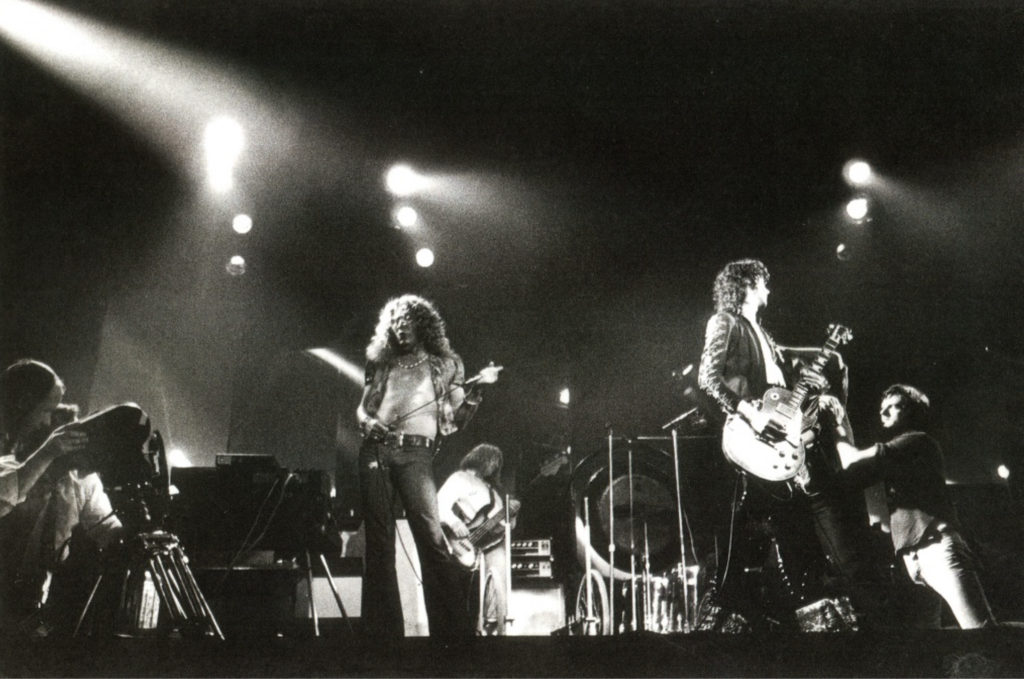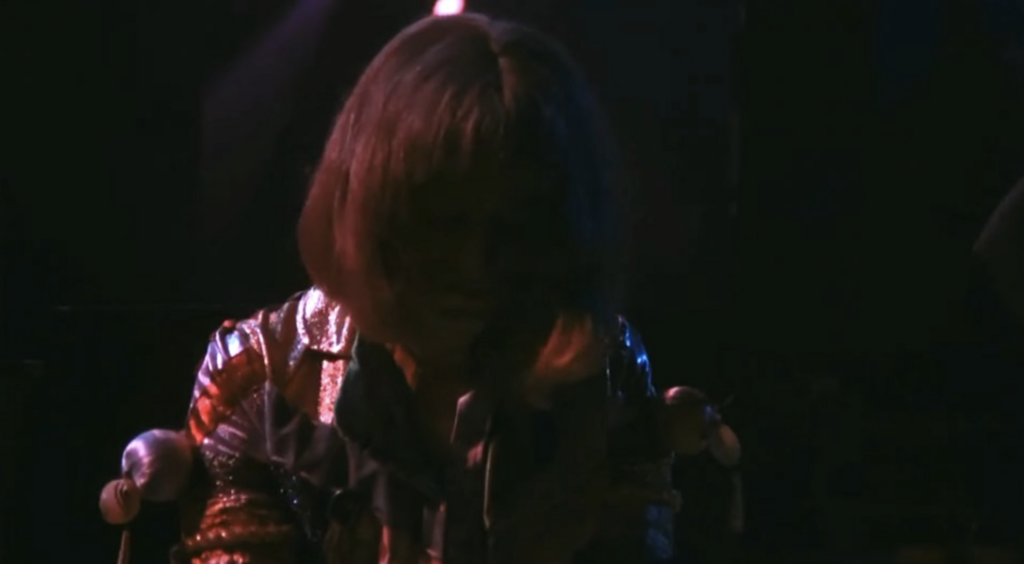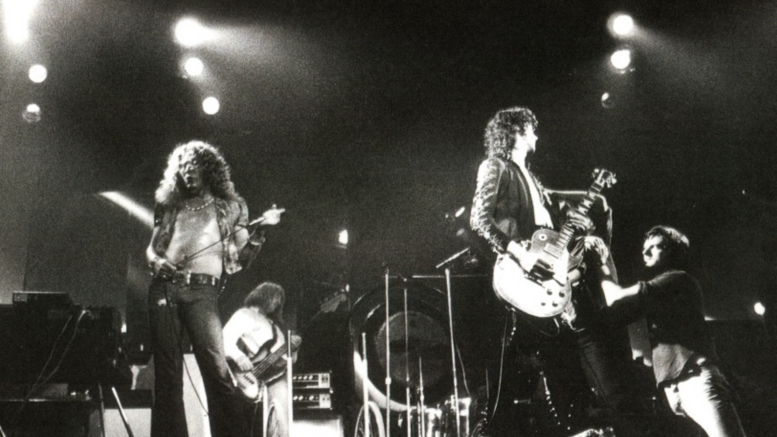In July 1973, Led Zeppelin finished its ninth North American tour with a three-night run at Madison Square Garden, each show professionally recorded and shot with the latest 35mm Panavision cameras that were largely hand-held.
The footage of these shows was later edited into the 1976 movie “The Song Remains the Same”. The film also includes backstage scenes filmed in Baltimore and Pittsburgh a few days earlier as well as concert scenes recreated and filmed at Shepperton Studios a year later along with fantasy sequences featuring each of the band members.
This ambitious film featuring one of the greatest bands of the ’70s was a disaster of a production, with several audio and video stitches, cuts and edits going into the final product. Essentially, the footage brought back from the live shows in the US was incomplete. The director, Joe Massot, had been asleep on the job. His three camera operators had switched their cameras on and off as they wished, with no concern for synchronisation with the magnetic sound tapes.
Many years later, in April 2022, I was researching information on a 1973 performance film of the band Genesis shot at Shepperton Studios. I was able to contact the film’s director, Gerry Harrison, who had been an assistant director on feature films such as the classic “Monty Python and the Holy Grail”, TV commercials and music promos. There are many mysteries surrounding this film and what better way to unravel them than to ask questions to the person who made it?
After taking a few steps to get in touch with Gerry, we began exchanging emails. Not only did he provide great insight into the Genesis production, he also informed me that he had worked on “The Song Remains the Same”, playing a part in filming the fantasy sequences as well as returning to Shepperton in 1974 to film the mocked-up concert footage. You can imagine this elated me as a big Led Zeppelin fan!

Gerry explained that he first worked for Peter Clifton (the director who replaced Joe Massot on “The Song Remains the Same”) on the film “The London Rock and Roll Show” at Wembley Stadium in 1972, when he was hired at very short notice to put together a crew of five camera operators and assistants, a roving sound unit, and all the necessary 16mm equipment and film stock. Unlike at Madison Square Garden, the cameras were at least in synch with the music that was recorded on a 16 track mobile recording truck.
Gerry has many memories of this extraordinary production: at one point during the afternoon he was aware of Mick and Bianca Jagger beside him on the stage, on which a series of ‘blues singers’ such as Muddy Waters and Howlin’ Wolf were scheduled to perform. It was these performers who Jagger had come to watch. When he indicated to Gerry that he would be happy to be interviewed about this legacy, Gerry found a quiet space in the depths of the stadium. Having called back a camera crew and the roving sound unit, he interviewed Jagger on the influence of the ‘blues’ on the early Rolling Stones. It was no surprise that, when finally released, the film’s titles placed Mick Jagger at the top of the bill above Little Richard, Jerry Lee Lewis and Chuck Berry!
His second collaboration with Peter Clifton took place sometime after the filming of Led Zeppelin’s July 1973 Madison Square Garden concerts when Gerry was called in to “help complete” the footage. When he first arrived at Peter’s house, he met his old friend, the film editor David Gladwell, in the basement surrounded by editing machines and stacks of film cans while trying to make sense of the footage.
Cutting the film proved to be a tedious task. Gerry explained to me that there had been no effort to synchronise the cameras used to film the shows – typically done with a clapper board or a less intrusive electronic system using sync pulses sent to an audio track (such as from a Nagra recorder) whenever a camera was turned on. This would have made assembling the footage easy. Massot and his crew were high on substance abuse, Gerry alleges. The result was not only amateur but also a massive waste of money.
David Gladwell tried to edit the picture rushes to produce the longest series of images with the fewest gaps. Synchronisation proved difficult due to the lack of knowledge of which rushes or audio came from which concert.
To solve these problems, the crew even asked Jimmy Page to help sort which songs and dates the footage came from. Furthermore, Led Zeppelin manager Peter Grant hired session guitarists to attempt to mimic what was being played based on the silent footage. Yet despite their efforts, the cutting copy was still very incomplete and the most complete songs, but not necessarily the best performances, were from different nights.
This is where the link was established between the Genesis film at Shepperton in October 1973 and the Led Zeppelin film in August 1974. The Genesis film shoot took place over two days, on October 30 and November 1, 1973, with a stage complete with the band’s equipment and lights set up in a large studio. A few dozen fans had been invited to represent the front rows of an audience. Audience applause from a previous Genesis concert was added later. The band played live on both days (recorded with the famous Rolling Stones Mobile Studio) in several takes and additional playback images were shot on the second day.

It was this experience that gave Gerry the idea of doing the same with Led Zeppelin to fill in the gaps in the rough cut. This was agreed with Grant and the Madison Square Garden stage was recreated at Shepperton, just as the Genesis stage had been some months earlier.
Reproducing the stage was, in Gerry’s words, “an almost impossible task” as furnishings and decorations had to match as closely as possible. The American lighting designer had to recreate what he had done in New York. As this all took place just over a year after the original concerts, the band members’ appearance had changed a good deal, including John Paul Jones who walked in with far shorter hair than he had the year before. So, Gerry took Jones to a wigmaker to try and get something close to his 1973 hair style. As several fans would go on to notice, the result is somewhat questionable!

While this is well known in Led Zeppelin circles, the story surrounding Robert Plant’s jeans isn’t as well understood. Plant no longer had the famous jeans worn for the New York concerts, with the dove pattern stitched just below his right pocket. Gerry had to go to second-hand shops to buy similarly aged jeans in the correct size and faded colour, but then had to find someone who could reproduce the dove pattern. A seamstress was found who was able to reproduce it as closely as possible using references from the film.
Once these aesthetic concerns had been resolved, the group was invited on stage to mime parts of the concert. (Unrecognised, Page travelled by regular train from Waterloo.) A large screen showing a rough copy of the film was set up in front of the stage, allowing the group to position themselves correctly in relation to the projected images. Gerry recalls the band mimed only the missing parts of the film, trying to get as close as possible to ensure a smooth transition between the real parts of the concert and the mimed parts. No sound was recorded, and (from Gerry’s memory) no complete songs were played at Shepperton as the intention was to fill in gaps in the existing footage.
Once shooting of the missing scenes at Shepperton was completed, Gerry worked further on the film’s fantasy sequences. He was the director of what was presumably the additional footage shot in Wales for Plant’s fantasy sequence where Virginia Parker replaced Plant’s wife Maureen as his damsel in distress (as seen in the existing rough cut of the film).
Today, although Gerry Harrison had a very good experience with the band on these shoots, he remains very disappointed about the film, as neither he, nor any of the cameramen he himself hired to shoot the fantasy scenes are credited on the film, despite the months of work involved. I hope fans can join me in thanking Gerry, David, and the unnamed crew members that devoted their time to create a cult classic in “The Song Remains the Same” that has persisted now, some 47 years later.
Ikhnaton
I would like to thank Gerry Harrison, without him and all the help he has given me, this article would not have been possible. Gerry is “une personne incroyable” as I would say in my native language! I’d also like to thank Eric “LedZepFilm” Levy for his invaluable help in writing this article and finally, James Cook for hosting my article on his great website.

Fantastic, congrats to all who helped make this happen for us fans of the No1 group in the world.
The only opportunity to see Led Zeppelin on film from those 1973 shows is on T S R T S. This is very heart breaking. I would have loved to see D & C, O T H & F A, N Q and T S R T S in there entirety. It breaks my heart. I don’t know if Jimmy has anything else visually or just audible stashed, but I hope he gets a shift on. I’m only getting older.
In hindsight,all they had to do was to film the whole stage from a distance,hence capturing the complete show and any missing footage could have been filled in.Even today i think all concerts should be filmed to capture the whole stage to see the lighting effects and released on dvd/bluray as extra’s named as a fans-eye-view…that would be common sense.
You spot on with that. In “THE SONG REMAINS THE SAME” instance, I don’t think the camera was recording the right person in the crucial moments of any particular song, and a lot of the footage was out of focus, which I why a lot of the tracks are carefully spliced in from other songs. For example In certain JP riffs you don’t see Jimmy except in profile but the movement fits that particular riff. Heartbreaker was/is a high profile song, but there’s little straight on footage. I the director of photography new the importance of each song the camera would have been pointing the right way. There is very little footage of Jimmy in the iconic songs of the day, ie Dazed & Confused.
I’ve missed sone letters out of my last comment, so do your bet<(best)